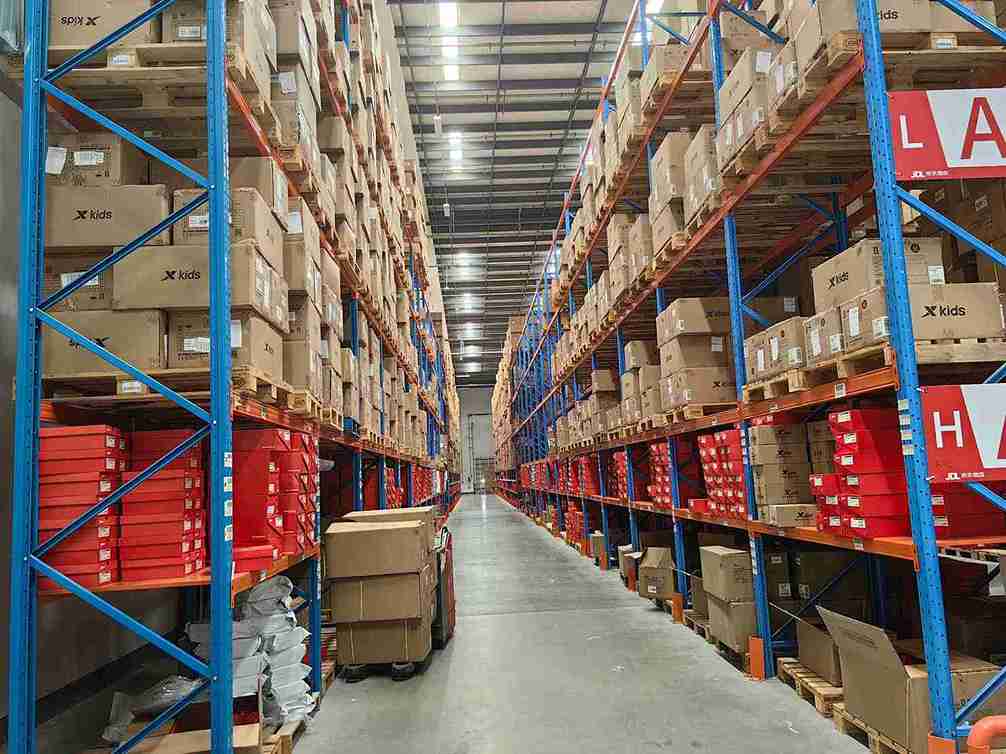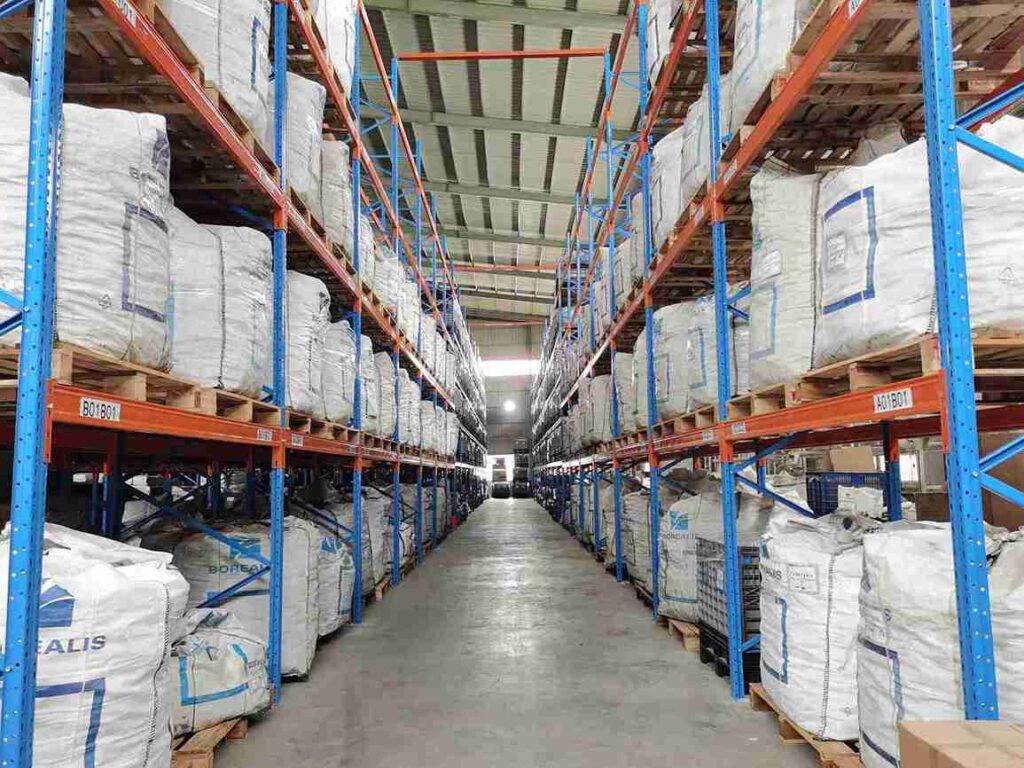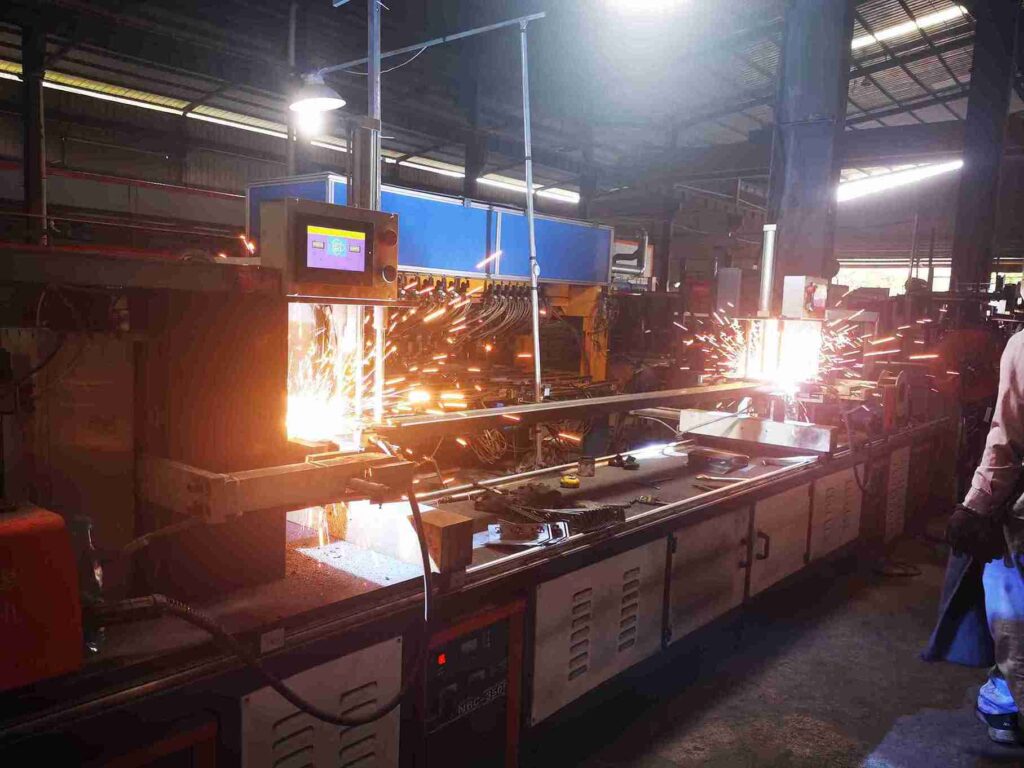📐 "First 50 Enterprise Queries Get Custom 3D Warehouse Design" Plan

Your Premier Partner for Pallet Rack Beams in Southeast Asia
In the high-stakes world of Southeast Asian logistics, manufacturing, and distribution, operational efficiency is directly tied to the strength and reliability of the storage infrastructure. At the heart of this infrastructure are pallet beams, the critical horizontal components that form the shelving of industrial racking systems. These are not mere metal bars; they are the engineered backbone that supports immense weight, dictates storage density, and ensures daily operational safety.
This company has positioned itself as the region’s undisputed leader in the supply of these essential components. By combining rigorous manufacturing standards, a massive in-stock inventory, and a streamlined logistics network, they deliver superior pallet beams with a commitment to fast delivery and direct price advantages. This comprehensive guide explores the engineering, selection, and strategic benefits of partnering with a specialist supplier for your pallet beams requirements, offering insights that go far beyond a simple product catalog.

Understanding Pallet Rack Beams: The Engine of Your Storage System
A foundational understanding of pallet beams is crucial for any business looking to optimize or expand its warehouse operations. Also known as step-beams or box-beams, these components perform the vital function of connecting upright frames and directly cradling palletized loads. The design integrity and quality of these pallet beams are non-negotiable, impacting everything from safety protocols to overall warehouse throughput.
Key Components and Engineering of a Pallet Beam
The durability of pallet beams is a function of their precise engineering and manufacturing. Each beam is a symphony of components working in unison:
-
Beam Body: The primary load-bearing section, formed from high-tensile steel. The company utilizes advanced roll-forming technology to create consistent, high-strength profiles. The specific step-beam design is not arbitrary; it is calculated to provide an optimal strength-to-weight ratio, ensuring the pallet beams can handle significant stress without unnecessary bulk.
-
Beam End Connectors (Tee-Ends): These are the critical interface points. Welded to the ends of the beam, they are precision-engineered to lock securely into the upright frame’s connectors. The company’s pallet beams feature connectors machined to exacting tolerances, ensuring a snug, wobble-free fit that guarantees maximum load transfer and system stability.
-
Safety Latch Holes: A small but vital feature, these holes allow for the installation of safety latches or locking clips. This is a fundamental safety mechanism on all modern pallet beams, designed to prevent accidental dislodgement caused by forklift impact, a common occurrence in busy warehouses.
-
Beam Step: The stepped design creates a positive locking shelf on the connector. This means the pallet beams are securely seated even before the safety latch is engaged, providing a primary level of security during installation and load shifts.
The Critical Role of Beam Capacity and Deflection in System Integrity
Two of the most critical technical specifications for pallet beams are load capacity and deflection. Misunderstanding these concepts can lead to catastrophic system failure.
-
Load Capacity: This refers to the maximum Uniformly Distributed Load (UDL) a set of pallet beams can safely support. It is a common misconception to think only of the weight of a single pallet. In reality, the capacity must account for the total weight of all pallets across the entire span of the pallet beams. The company’s technical team specializes in calculating the required capacity based on specific pallet weights, dimensions, and the clear span between uprights, ensuring the selected pallet beams are never undersized for their duty.
-
Deflection: All pallet beams will experience a degree of sag under load; this is known as deflection. However, excessive deflection is a red flag, indicating an undersized beam that compromises stability and safety. Industry standards, such as the Rack Manufacturers Institute (RMI) guidelines, typically specify a maximum permissible deflection of L/180. The pallet beams supplied by this company are rigorously tested to meet or exceed this standard, ensuring they remain stable and level under full load, protecting both the inventory and the personnel below.

Why This Company Is Southeast Asia’s Undisputed Leader in Pallet Beam Supply
The claim of being the premier supplier of pallet beams in Southeast Asia is substantiated by a proven track record and a strategic focus on the core challenges faced by the region’s industries. Their leadership is built on a triad of quality, speed, and value.
Uncompromising Quality and Rigorous Manufacturing Standards
For a component as critical as pallet beams, quality cannot be an afterthought. It is the foundational principle of their manufacturing process.
-
High-Grade Steel Selection: The company sources S355JR grade steel (or its regional equivalent) for its core range of pallet beams. This material offers a significantly higher yield strength (355 N/mm² minimum) compared to the more common S235 grade, translating directly to a stronger, more durable beam capable of withstanding the rigors of heavy-duty cycling.
-
Advanced Fabrication Techniques: The connection between the beam body and the end connector is a potential weak point. To eliminate this, the company employs state-of-the-art robotic welding. This ensures every weld on their pallet beams is consistent, deep, and free from the imperfections common in manual welding, creating a unified, high-strength component.
-
Superior Corrosion Protection: The humid, often saline-rich environments of coastal Southeast Asia pose a significant threat to storage equipment. The pallet beams undergo a multi-stage pre-treatment (phosphating) followed by an electrostatic powder-coating process. This results in a finish that is far more resilient to chipping, scratching, and corrosion than standard wet paint, with a standard rating of over 500 hours in salt spray tests.
Massive Inventory & The Ironclad Promise of Fast Delivery
In logistics, time is money. A delay in receiving pallet beams can bring an entire distribution center to a standstill, resulting in massive financial losses.
-
Strategic Stockholding: The company maintains a vast inventory of the most in-demand sizes and capacities of pallet beams at strategically located hubs across the ASEAN region. This means that for the majority of standard orders, the required pallet beams are not just a production order away; they are physically present in a warehouse, ready for immediate dispatch.
-
Optimized Logistics Network: Long-standing partnerships with a curated selection of logistics providers allow the company to guarantee fast delivery across Singapore, Malaysia, Indonesia, Thailand, Vietnam, and the Philippines. Whether the shipment is a full truckload to an industrial park in Batam or a consolidated container to Port Klang, they have the expertise to navigate regional logistics complexities efficiently.
-
Just-in-Time (JIT) Delivery Capability: For large-scale projects or clients with continuous operations, the company can implement JIT delivery schedules. This synchronizes the delivery of pallet beams with the project’s installation timeline, minimizing on-site storage requirements and streamlining the entire construction process.
The Direct Price Advantage: Eliminating Middlemen for Real Savings
Operating as a direct manufacturer and supplier allows the company to bypass the traditional supply chain layers of distributors, wholesalers, and agents. This direct price model is a game-changer for procurement managers. The cost savings achieved when purchasing these high-quality pallet beams can be substantial, often freeing up capital that can be redirected towards other critical areas of the business, such as automation or workforce training. This approach makes top-tier pallet beams accessible without the premium price tag.
Our Comprehensive Product Range: Precisely Engineered Pallet Beams for Every Application
Modern warehousing is not monolithic; it demands a variety of storage solutions. Recognizing this, the company offers an extensive range of pallet beams, each designed to excel in specific applications and load environments.
Standard Step Beams: The Workhorse of the Warehouse
These are the most common and versatile pallet beams, engineered for use with traditional selective pallet racking. They are available in a vast array of standard lengths, depths, and capacities, making them suitable for the overwhelming majority of warehouse layouts. The step design provides the ideal balance of strength, weight, and cost-effectiveness for these pallet beams.
Box Beams: For Uncompromising Heavy-Duty Applications
When storage requirements involve extreme loads or where maximum rigidity is non-negotiable, the company’s heavy-duty pallet beams, or box beams, are the definitive solution. Their closed-section, rectangular design offers superior resistance to torsion and the highest possible load capacities, making these pallet beams ideal for storing dense materials like metal coils, heavy machinery, or bulk liquids.
Structural Beams: The Foundation for High-Bay and Seismic Stability
Used in structural pallet racking systems, these pallet beams are characterized by their thicker gauge material and are typically bolted to the uprights. This creates an immensely rigid frame structure, essential for high-bay warehouses exceeding 12 meters in height or for installations in regions with seismic activity. These pallet beams are integral to the building’s structural integrity.
Rolled Formed vs. Structural Beams: A Strategic Selection Guide
Understanding the fundamental difference between these two types of pallet beams is critical for making a cost-effective and safe specification.
-
Roll-Formed Beams (The Company’s Core Expertise): Manufactured from coiled steel that is cold-formed through a series of rollers, these pallet beams are lightweight, cost-efficient, and exceptionally strong. This manufacturing process allows for high-volume production and consistency, which is the foundation of the company’s fast delivery promise for a wide range of standard pallet beams. They are perfectly suited for over 90% of warehouse applications.
-
Structural Beams: These are fabricated from pre-formed steel sections (like C-channels) and joined via welding. They are heavier, more labor-intensive to produce, and consequently more expensive. These pallet beams are reserved for specialized applications where their unique properties are necessary. The company’s experts provide unbiased guidance, ensuring clients never over-specify with costly structural pallet beams when high-quality roll-formed pallet beams are perfectly adequate.
Technical Deep Dive: A Methodical Approach to Selecting the Perfect Pallet Beams
Selecting the correct pallet beams is a systematic process that goes beyond simply choosing a length from a catalog. It is a technical exercise that ensures safety, maximizes storage density, and protects the bottom line.
Step 1: Accurately Calculating Your Load Requirements
The company advocates for a thorough and conservative calculation method. The formula they guide clients through is: (Weight of Heaviest Pallet) x (Number of Pallets per Beam Level) x (Dynamic Safety Factor). The safety factor, often 1.5 or higher, is not a suggestion but a necessity. It accounts for the dynamic forces imposed during loading and unloading—the impact of a forklift placing a pallet is far greater than the static weight alone. This calculation determines the minimum required capacity for the pallet beams.
Step 2: Determining the Correct Beam Span and Length
The capacity of pallet beams is intrinsically linked to their span. A fundamental principle of physics is that a beam’s load-bearing capacity decreases as the distance between supports increases. A specific model of pallet beams rated for 4,000 kg at a 2.4-meter span may only be rated for 1,800 kg at a 3.6-meter span. The company provides clear, easy-to-understand load tables that explicitly state the UDL capacity for every model of their pallet beams at every standard span, removing all guesswork from the selection process.
Step 3: Choosing the Optimal Beam Depth and Gauge
The physical dimensions of the pallet beams are direct indicators of their strength. The depth of the beam (the vertical measurement) is a primary driver of its load capacity; a deeper beam will generally be stronger. Similarly, the thickness (gauge) of the steel used in the beam’s construction contributes significantly to its overall strength and resistance to buckling. The company’s product literature is designed to facilitate easy comparison of these key metrics across their range of **pallet beams**, empowering clients to make informed decisions.
Compatibility Assurance: Engineered Pallet Beams for Any Rack System
A paramount concern for any procurement manager sourcing from a secondary supplier is component compatibility. The company has meticulously engineered their pallet beams to be fully interchangeable with the vast majority of racking brands operating in the Southeast Asian market.
-
Industry-Standard Tee-Ends: The beam end connectors on their pallet beams are manufactured to conform to the prevailing industry standards for hook dimensions and spacing. This ensures a secure and precise fit into the upright connectors of systems from most major international and local brands.
-
Proactive Compatibility Verification: Whether a client’s existing system is from a global giant or a regional fabricator, the company’s technical team leverages its extensive database and practical experience to confirm compatibility before an order is placed. This due diligence provides absolute peace of mind, ensuring the new pallet beams will integrate seamlessly with the existing structure.
The Ordering and Delivery Process: A Seamless Journey from Inquiry to Installation
The company has engineered its customer journey to be as robust and reliable as the pallet beams it supplies. The process is transparent, efficient, and professionally managed from start to finish.
-
In-Depth Consultation & Transparent Quotation: Clients provide their requirements—be it a list of needed pallet beams or full layout drawings. The response is a detailed, itemized quotation with the direct price, delivered promptly with no hidden costs.
-
Technical Validation and Support: For new projects or complex layouts, the technical team offers a complimentary review service. They analyze the plans to validate the selection of pallet beams and identify potential issues related to load paths or clearances, mitigating risks before they reach the installation phase.
-
Order Confirmation & Agile Fulfillment: Upon order confirmation, standard pallet beams are immediately allocated from inventory. For custom requirements, the manufacturing team is activated, with progress updates available upon request.
-
Fast, Tracked Delivery: The order of pallet beams is professionally packed to prevent transit damage and dispatched via the optimal logistics channel. Clients receive real-time tracking information, living up to the fast delivery commitment.
-
Dedicated Post-Sale Support: The relationship is ongoing. The company remains a resource for installation guidance, future expansion planning, and technical support, solidifying its role as a long-term partner.
Beyond Beams: Leveraging Integrated Storage Solution Expertise
While pallet beams are their specialty, the company’s deep industry knowledge allows them to provide valuable insights into the entire storage ecosystem. They can advise on or supply all complementary components, ensuring total system harmony and performance.
-
Pallet Rack Uprights: The vertical frames that provide the structural support for the pallet beams.
-
Wire Mesh Decking: Adds a safety layer, prevents small items from falling, and allows for more flexible storage options on the pallet beams.
-
Row Spacers and Braces: Critical for stabilizing back-to-back rack rows, which in turn supports the pallet beams.
-
Forklift Impact Protection: Guard posts and column protectors to shield the upright frames and the lower levels of pallet beams from accidental impacts.
Conclusion: Forge a Smarter, Stronger, and More Efficient Warehouse
The landscape of Southeast Asian industry is fiercely competitive, and the margin for operational error is slim. The decision of where to source pallet beams is a strategic one, with direct consequences for safety, efficiency, and profitability. This company has built its entire operation around a simple but powerful proposition: to provide pallet beams of uncompromising quality, delivered with unparalleled speed, and offered at a transparent direct price.
They are not just a vendor; they are a partner in building resilient and productive storage infrastructures. For businesses that cannot afford to compromise on the components that form the backbone of their operations, the choice is clear. Engaging with this specialist supplier of pallet beams is the first step toward building a foundation for future growth and operational excellence.
Frequently Asked Questions (FAQs)
1. What is the typical lead time for a standard order of pallet beams to a major port in Thailand or Vietnam?
For in-stock standard pallet beams, the company typically processes and ships orders within 24-48 hours. Transit time to major industrial hubs in Thailand or Vietnam is usually between 5-10 business days, depending on the final destination. A firm delivery timeline is provided with every quotation.
2. Do your pallet beams come with a warranty and certification?
Yes, the company stands firmly behind its quality. Their pallet beams come with a comprehensive warranty against manufacturing defects. Furthermore, they provide a Certificate of Compliance with every batch, detailing the steel grade, manufacturing standards, and finish specifications, which is crucial for safety audits and insurance purposes.
3. Can you manufacture custom-length or high-capacity pallet beams that are not in your standard catalog?
Absolutely. While their strength is in providing fast access to standard pallet beams, they possess full custom manufacturing capabilities. They can produce pallet beams to exact length, capacity, and even connector specifications for specialized projects, maintaining the same commitment to quality.
4. How do I verify if your pallet beams will be compatible with my existing rack system from another manufacturer?
Compatibility is a core part of their service. Providing the make and model of the existing upright frames, or a clear photograph and dimensions of the beam connector, allows their technical team to confirm compatibility swiftly. Their pallet beams are engineered for interoperability with most systems in the region.
5. What is your process for handling large, multi-site projects requiring coordinated delivery of pallet beams?
The company has a dedicated project management team for large-scale orders. They develop a coordinated logistics plan that can schedule phased deliveries of pallet beams to multiple sites, synchronizing with project timelines to ensure materials arrive just as they are needed, without causing on-site congestion or delays.




